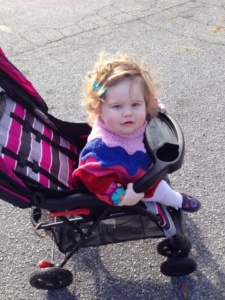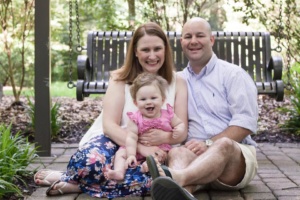Liver Transplantation for Propionic Acidemia:
Part 1 - Răspunsuri la întrebările pe care familiile le-ar putea avea,,en,James Squires,,en,Squires este un specialist în boli hepatice la Spitalul de Copii din Pittsburgh din UPMC și un profesor asistent de pediatrie la Universitatea din Pittsburgh School of Medicine,,en,Jodie M,,en,vânt,,it,MGC,,tl,LCGC,,en,Jodie Vento este consilier genetic și director al Centrului pentru Terapia Rarei Bolilor la Spitalul de Copii din Pittsburgh din UPMC,,en,Ce ne putem aștepta ca un transplant de ficat să facă pentru copilul nostru,,en,Bazat pe experiența dobândită până în prezent cu transplanturi hepatice la copiii cu acid propionic,,en,putem spune că după un transplant de ficat,,en,copiii sunt susceptibili să aibă o calitate a vieții substanțial mai bună și o reducere dramatică a crizelor metabolice,,en,Este important ca familiile să înțeleagă,,en,că transplantul de ficat este,,en,nu,,en
James Squires, MD, MS
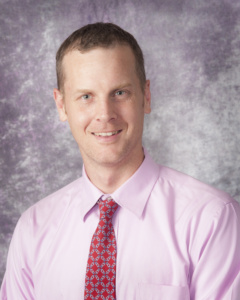
Dr. James Squires
Dr. Squires is a liver disease specialist at Children’s Hospital of Pittsburgh of UPMC and an assistant professor of pediatrics at the University of Pittsburgh School of Medicine.
Jodie M. Vento, MGC, LCGC
Jodie Vento is a genetic counselor and manager of the Center for Rare Disease Therapy at the Children’s Hospital of Pittsburgh of UPMC.
What can we expect that a liver transplant could do for our child?
Based on experience to date with liver transplants in children with Propionic Acidemia (PA),we can say that after a liver transplant,children are likely to have a substantially better quality of life and a dramatic reduction in metabolic crises. It’s important for families to understand, totuși, that liver transplantation is not un leac pentru PA,,en,Acest lucru se datorează faptului că deficitul de enzime care cauzează PA există pe întreg corpul,,en,nu doar în ficat,,en,Transplantul de ficat servește ca ceea ce specialiștii la ficat numesc a,,en,înlocuirea enzimelor în vrac,,en,oferind o enzimă suficientă pentru a minimiza - dacă nu elimina - crize metabolice,,en,care sunt cele mai severe complicații ale PA pentru copiii afectați, precum și una dintre cele mai înfricoșătoare trăsături ale bolii pentru familii,,en,Deoarece complicațiile legate de PA pot să apară în urma unui transplant,,en,va exista o nevoie continuă pentru copilul dumneavoastră să beneficieze de îngrijire ulterioară cu unul sau mai mulți specialiști medicali,,en,Există o vârstă minimă sau "cea mai bună" pentru un copil cu PA pentru a avea un transplant de ficat,,en,Nu există nici o vârstă minimă sau "cea mai bună",,en,În centrul nostru,,en. This is because the enzyme deficiency that causes PA exists throughout the body, not just in the liver.
The liver transplant serves as what we liver specialists call a bulk enzyme replacement, providing enough functional enzyme to minimize – if not eliminate –metabolic crises, which are the most severe complications of PA for affected children as well as one of the most frightening features of the disease for families.
Because complications related to PA may still occur following a transplant, there will be a continued need for your child to get follow-up care with one or more medical specialists.
Is there a minimum or “best” age for a child with PA to have a liver transplant?
There is no minimum or “best” age. At our center, vârsta medie a unui transplant de ficat pentru un copil cu PA este de aproximativ șapte ani,,en,dar am efectuat transplanturi la copiii cu vârsta de un an,,en,Cel mai bun moment pentru a lua în considerare un transplant de ficat este în timp ce simptomele PA sunt încă în mod rezonabil bine controlate,,en,De asemenea, nu există vârsta minimă pentru a fi supusă unei evaluări înainte de transplant sau pentru a fi introdusă pe lista de așteptare pentru transplant,,en,Ce ar trebui să luăm în considerare atunci când decidem unde să luăm copilul nostru pentru o evaluare a transplantului de ficat,,en,Cel mai important factor de luat în considerare este experiența echipei chirurgicale care efectuează transplanturi de ficat la pacienții cu PA și alte boli metabolice,,en,Acești pacienți au nevoi complexe diferite de cele ale pacienților care primesc transplanturi de ficat în alte condiții,,en, but we have performed transplants in children as young as one year old.
The best time to consider a liver transplant is while the symptoms of PA are still reasonably well controlled. There is also no minimum age for undergoing a pre-transplant evaluation or being placed on the transplant waiting list.
What should we consider when deciding where to take our child for a liver transplant evaluation?
The most important factor to consider is the experience of the surgical team performing liver transplants in patients with PA and other metabolic diseases. These patients have complex needs that are different from those of patients receiving liver transplants for other conditions.
Programul de transplant hepatic pediatric la Spitalul de Copii din Pittsburgh al UPMC a fost înființat în 2006,en 1981 by world-renowned transplant surgeon Thomas E. Starzl, MD, Dr.. Our t Director of Pediatric Transplantation, George Mazariegos, MD, FACS, pioneered liver transplantation for children with metabolic diseases in 2004. Since that time, Children’s Hospital has performed more than 330 liver transplants for children with metabolic disease,more than any other transplant center.
We’ve also performed more liver transplants in children than any other center in the United States and more living-donor transplants than any other pediatric center in the country. Our one-year survival rate for pediatric liver transplant patients is 98%, exceeding the national average of 95%, according to the Scientific Registry of Transplant Recipients, Jan. 2018 release.
În plus față de chirurgii noștri de transplant hepatic, renumiți și experimentați,,en,Centrul nostru pentru Terapia Rarei Bolilor include experți internaționali în diagnosticul și tratamentul PA și a altor boli metabolice,,en,Cum am începe procesul de evaluare a copilului nostru pentru un transplant de ficat,,en,Pot să vă spun cum funcționează acest proces aici la Spitalul de Copii din Pittsburgh al UPMC,,en,Începe cu o trimitere din partea medicului sau a spitalului, solicitând evaluarea copilului dumneavoastră,,en,De asemenea, primim auto-trimiteri direct de la familiile interesate,,en,Vom cere medicului sau spitalului,,en,sau amândouă,,en,să ne trimiteți toate fișele medicale ale copilului dvs.,,en,Vom analiza cu atenție înregistrările pentru a ne ajuta să înțelegem istoricul medical al copilului și situația actuală,,en, our Center for Rare Disease Therapy includes international experts in the diagnosis and treatment of PA and other metabolic diseases.
How would we start the process of having our child evaluated for a liver transplant?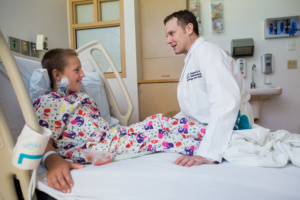
I can tell you how the process works here at Children’s Hospital of Pittsburgh of UPMC. It starts with a referral from your doctor or hospital requesting that we evaluate your child. We also receive self-referrals directly from interested families. We will ask the doctor or hospital, or both, to send us all of your child’s medical records.
We will look at the records carefully to help us understand your child’s medical history and current situation. Aceste informații ajută echipa noastră multidisciplinară să dezvolte un plan individualizat pentru vizita de evaluare a copilului dumneavoastră,,en,dacă copilul dvs. a efectuat recent anumite teste de laborator sau de imagistică,,en,nu vom repeta aceste teste dacă nu există un motiv medical valid pentru a face acest lucru,,en,Înțelegerea modului în care boala vă afectează copilul ne ajută să identificăm ce specialiști ar trebui să vadă copilul dvs. în timpul evaluării,,en,Este important ca familiile să știe că în cursul unei evaluări pre-transplant nu implică nici un angajament din partea lor,,en,Nu are nici o garanție că copilul dvs. va fi listat pentru un transplant sau,,en,invers,,en,orice cerință că trebuie să fiți de acord să plasați copilul pe lista de așteptare pentru transplant,,en,Putem răspunde la întrebări,,en,furnizeaza informatie,,en,și să facă recomandări,,en,în cele din urmă,,en. For example, if your child has recently had certain laboratory or imaging tests done, we won’t repeat those tests unless there’s a valid medical reason for doing so. Understanding how the disease is affecting your child helps us identify which specialists your child should see during the evaluation.
It’s important for families to know that undergoing a pre-transplant evaluation involves no commitment on either side. It carries no guarantee that your child will be listed for a transplant or, conversely, any requirement that you must agree to have your child placed on the transplant waiting list. We can answer questions, provide information, and make recommendations. Ultimately, totuși, decizia de a efectua un transplant,,en,sau nu,,en,este una personală pentru fiecare familie,,en,Evaluarea reprezintă o oportunitate pentru familie și echipa de îngrijire a sănătății să se întâlnească și să se cunoască reciproc,,en,precum și pentru ca familia să adune informații și să obțină răspunsuri la toate întrebările pe care le aveți,,en,Sperăm că vă veți simți confortabil ridicând preocupările,,en,Nu ezitați să ne întrebați despre orice problemă care vă aparține,,en,Nu există întrebări prostești sau prostești,,en,dacă după ce ați plecat acasă, vă gândiți la ceva pe care doriți să-l întrebați,,en,vă rugăm să ne sunați,,en,Vă puteți aștepta ca evaluarea să fie una,,en,sau eveniment de trei zile,,en,Personalul Centrului nostru pentru Terapia Rarei Bolilor va lucra cu dumneavoastră pentru a vă aranja,,en,copilul tău,,en, or not, is a personal one for each family to make.
The evaluation is an opportunity for the family and the health care team to meet and get to know each other, as well as for the family to gather information and get answers to any and all questions you may have. We hope you’ll feel comfortable raising any concerns. Please don’t hesitate to ask us about any issue that’s on your mind. There are no dumb or silly questions. And, of course, if after you’ve gone home you think of something that you wish you had asked, please give us a call.
You can expect that the evaluation will be a two- or three-day event. The staff of our Center for Rare Disease Therapy will work with you to arrange for you, your child, și alți membri ai familiei să stea lângă spital,,en,fie la casa noastră Ronald McDonald, fie la un hotel din apropiere,,en,în timp ce sunteți aici pentru evaluare,,en,Vă vom trimite un program înainte de vizita dvs.,,en,Acest lucru vă va spune care sunt specialiștii medicali și chirurgi pe care îi veți vedea la ce vremuri și ce teste de laborator sau de imagistică ne-ar dori copilul dumneavoastră să aibă în timpul evaluării,,en,În măsura în care este posibil,,en,încercăm să anticipăm toate testele de care avem nevoie, astfel încât să fie un proces relativ lină în timp ce sunteți aici,,en,Spuneți-ne mai multe despre ceea ce ne putem aștepta în timpul evaluării copilului nostru,,en,Deoarece PA este o boală genetică,,en,specialiștii pe care îi veți vedea probabil vor include un genetician medical și un dietetician metabolic,,en, either at our Ronald McDonald house or at a nearby hotel, while you’re here for the evaluation.
We’ll send you a schedule in advance of your visit. This will tell you which medical and surgical specialists you’ll be seeing at what times and what laboratory or imaging tests we would like your child to have during the evaluation. To the extent possible, we try to anticipate all the testing we’ll need so that it’s a relatively smooth process while you’re here.
Please tell us more about what we can expect during our child’s evaluation.
Because PA is a genetic disease, the specialists you’ll see will likely include a medical geneticist and a metabolic dietician. Also, deoarece PA cauzează adesea probleme cardiace,,en,evaluarea copilului dumneavoastră va include probabil teste funcționale de bază ale inimii și o evaluare efectuată de un cardiolog,,en,În funcție de modul în care boala vă afectează copilul,,en,evaluarea poate include, de asemenea, vizite cu specialiști, cum ar fi următoarele,,en,Un neurolog,,en,pentru a evalua funcția creierului,,en,Un gastroenterolog,,en,pentru a evalua funcția pancreasului,,en,Un hematolog,,en,pentru a evalua funcția măduvei osoase,,en,Deși încercăm să anticipăm toate testele de care avem nevoie și să o programăm în avans,,en,uneori am putea decide că ar fi util să facem un test suplimentar care nu a fost inițial în program,,en,în funcție de rezultatele testelor funcției cardiace de bază,,en, your child’s evaluation is likely to include basic heart function tests and an assessment by a cardiologist. Depending on how the disease is affecting your child, the evaluation may also include visits with specialists such as the following:
- A neurologist, to assess brain function
- A gastroenterologist, to assess pancreas function
- A hematologist, to assess bone marrow function
Although we try to anticipate all the testing we’ll need and schedule it in advance, sometimes we may decide that it would be helpful to do an additional test that wasn’t originally on the schedule. For example, depending on the results of the basic heart function tests, cardiologul ar putea dori să facă un "test de stres" care să ofere informații mai detaliate și măsurători referitoare la cât de bine funcționează inima copilului dumneavoastră,,en,Dacă vom decide să mergem cu listarea copilului nostru pentru un transplant,,en,care sunt opțiunile noastre pentru obținerea unui ficat donator,,en,Cât timp ne putem aștepta să ia pentru a găsi un donator compatibil,,en,PA este considerată o condiție cu prioritate ridicată pentru transplantul de ficat,,en,astfel încât numele copilului dvs. se va afla în partea de sus a listei de așteptare,,en,deoarece cererea pentru ficatul donatorului este ridicată, iar oferta este limitată,,en,Spun familiilor să fie pregătite să se afle pe lista de așteptare timp de câteva luni,,en,Cu orice transplant de ficat,,en.
If we decide to go ahead with listing our child for a transplant, what are our options for obtaining a donor liver? How long can we expect it to take to find a compatible donor?
PA is considered a high-priority condition for liver transplantation, so your child’s name will be near the top of the waiting list. Totuși, because demand for donor livers is high and supply is limited, I tell families to be prepared to be on the waiting list for several months.
With any liver transplant, trebuie efectuată o testare atentă pentru a asigura compatibilitatea ficatului donator și a beneficiarului transplantului. Mulți factori pot influența timpul de așteptare pentru un organ compatibil,,en,un copil cu un tip de sânge mai puțin obișnuit se poate confrunta cu o așteptare mai lungă,,en,În general,,en,ficatul donatorilor de dimensiuni mici este rar,,en,O caracteristică unică a ficatului,,en,este că este singurul organ din corpul uman care se poate regra,,en,Acest lucru înseamnă că, în unele cazuri, este posibilă transplantul unei secțiuni dintr-un ficat sănătos, mai degrabă decât întregul organ,,en,un copil care are nevoie de un transplant de ficat poate primi o secțiune de ficat de la un donator adult,,en,Puteți auzi acest tip de transplant denumit transplant de ficat "redus" sau "împărțit",,en. For example, a child with an uncommon blood type may face a longer wait.
In general, child-size donor livers are scarce. A unique feature of the liver, totuși, is that it is the only organ in the human body that can regrow. This means that in some cases it’s possible to transplant a section of a healthy liver rather than the whole organ. For example, a child who needs a liver transplant may receive a section of a liver from an adult donor. You may hear this type of transplant referred to as a “reduced-size” or “split” liver transplant.
Un alt tip de transplant de ficat implică o persoană vie - cum ar fi o rudă,,en,prieten,,en,sau chiar un străin - donând o secțiune din ficat lor unei persoane care are nevoie de un transplant,,en,Transplanturile de donatori de viață pot fi o opțiune pentru unii copii cu PA,,en,deoarece PA este o boală genetică,,en,părinții și eventual frații pot fi purtători ai unuia dintre defectele genetice care provoacă boala,,en,Cineva care este un purtător nu ar fi un donator adecvat în viață,,en,Vestea bună este că copiii care primesc un ficat parțial par să facă la fel de bine ca și cei care primesc un ficat întreg,,en,Toate opțiunile pentru obținerea unui ficat donator,,en,inclusiv o dimensiune redusă,,en,Despică,,en,sau transplant de donator viu,,en,sunt discutate în timpul evaluării înainte de transplant,,en,Am hotărât că un transplant de ficat este potrivit pentru copilul nostru,,en, friend, or even a stranger – donating a section of their liver to someone who needs a transplant. Living-donor transplants may be an option for some children with PA. Totuși, because PA is a genetic disease, parents and possibly siblings may be carriers of one of the genetic defects that cause the disease. Someone who is a carrier would not be a suitable living donor.
The good news is that children who receive a partial liver seem to do just as well as those who receive a whole liver. All of the options for obtaining a donor liver, including a reduced-size, split, or living-donor transplant, are discussed during the pre-transplant evaluation.
We’ve decided that a liver transplant is right for our child. Care sunt pașii următori,,en,Când numele copilului dvs. este plasat pe lista de așteptare pentru transplantul de ficat,,en,vă vom da un pager pe care trebuie să-l luați cu dvs. oriunde mergeți, pentru a vă putea contacta imediat atunci când primim un apel că este disponibil un ficat de donator,,en,Nu știm când va veni chemarea,,en,dar când se va întâmpla, va trebui să puteți ajunge la Spitalul de Copii într-un loc sigur,,en,dar moda în timp util,,en,Echipa de transplant va lucra împreună cu dvs. pentru a stabili un "plan de călătorie" pentru dvs. și familia dvs. pentru momentul în care este posibil să apară transplantul,,en,În timp ce copilul dvs. se află pe lista de așteptare,,en,specialiștii noștri vor colabora cu medicii locali pentru a-și îngriji copilul și pentru a-și optimiza starea medicală înainte de transplant,,en?
When your child’s name is placed on the liver transplant waiting list, we will give you a pager that you will need to take with you everywhere you go so that we can reach you right away when we get a call that a matching donor liver is available. We don’t know when that call will come, but when it does you’ll need to be able to get to Children’s Hospital in a safe, but timely fashion. The transplant team will work with you to establish a ‘travel plan’ for you and your family for when the transplant is likely to occur.
While your child is on the waiting list, our specialists will work with your local doctors to care for your child and optimize their medical condition ahead of the transplant.
Stim ca asteptarea poate fi un moment dificil pentru familii,,en,Coordonatorul dvs. de transplant este întotdeauna disponibil pentru a vă răspunde la întrebările și preocupările dvs. și, de asemenea, vă poate ajuta să faceți aranjamente de călătorie,,en,Odată ce ajungeți la spital,,en,se pot lua preparate pentru transplant,,en,Copilul dvs. va fi supus unei alte runde de teste pentru a confirma că ficatul donatorului este un meci bun,,en,Copilul dumneavoastră va trebui, de asemenea, să repede înainte de operație,,en,Dietiții noștri metabolici ne vor ajuta să pregătim fluide intravenoase pentru a oferi copilului dvs. un echilibru individualizat de grăsimi,,en,proteină,,en,și glucoză pentru a menține stabilitatea în timp ce nu pot lua nimic pe cale orală,,en,Operația de transplant hepatic poate dura până la câteva ore,,en,deși acest lucru variază în fiecare caz,,en,În timp ce copilul dvs. se află în sala de operație,,en. Your transplant coordinator is always available to respond to your questions and concerns and can also help you make travel arrangements.
Once you arrive at the hospital, preparations for the transplant may take from 12 to 24 hours. Your child will undergo another round of tests to confirm that the donor liver is a good match. Your child will also need to fast before surgery. Our metabolic dieticians will help us prepare intravenous fluids to provide your child with an individualized balance of fats, protein, and glucose to maintain stability while they can’t take anything by mouth.
The liver transplantation surgery may take up to several hours, although this varies in each case. While your child is in the operating room, un membru al echipei de transplant vă va informa în legătură cu evoluția transplantului,,en,După operație,,en,copilul dumneavoastră va merge la unitatea de terapie intensivă pentru a fi monitorizat îndeaproape până când starea lor este stabilă,,en,Apoi copilul dumneavoastră va fi mutat la unitatea de transplant de ficat,,en,Personalul de aici vă va ajuta să aflați despre medicamentele copilului dumneavoastră,,en,cura de slabire,,en,nevoie de îngrijire ulterioară,,en,și orice altceva veți avea nevoie să știți pentru a avea grijă de copilul dumneavoastră,,en,După transplant,,en,copilul nostru va trebui să ia medicamente anti-respingere,,en,După un transplant de ficat,,en,trebuie să vă așteptați ca copilul dumneavoastră să aibă nevoie de medicamente pentru tot restul vieții sale pentru a preveni respingerea organelor,,en.
After the surgery, your child will go to the intensive care unit to be monitored closely until their condition is stable. Then your child will be moved to the liver transplant unit. Staff here will help you learn about your child’s medications, diet, need for follow-up care, and anything else you’ll need to know to care for your child.
After the transplant, will our child have to take anti-rejection medication?
After a liver transplant, you should expect that your child will need to take medication for the rest of his or her life to prevent organ rejection. Reacția normală a organismului la un organ transplantat este recunoașterea acestuia ca "agent străin" și montarea unui răspuns imun împotriva noului ficat,,en,Medicamentele anti-respingere suprimă sistemul imunitar,,en,care este sistemul de apărare al organismului împotriva bolilor și infecțiilor,,en,pentru a preveni atacarea noului ficat,,en,Deoarece medicamentele anti-respingere slăbesc sistemul imunitar,,en,copilul dumneavoastră poate avea mai multe șanse de a suferi infecții - iar infecțiile vor fi mai greu de tratat,,en,Va trebui să anunțați echipa de transplant la primul semn al unei infecții,,en,cum ar fi febra,,en,frisoane,,en,transpiratii,,en,tușit,,en,congestie nazala,,en,diaree,,en,roșeață sau umflături,,en,durere,,en,sau vărsături,,en,Este posibil să fie necesară și trimiterea la un medic,,en,Cu medicamente care suprimă imunitatea,,en. Anti-rejection medications suppress the immune system, which is the body’s defense system against illness and infection, to prevent it from attacking the new liver.
Because anti-rejection medications weaken the immune system, your child may be more likely to get infections – and those infections will be harder to treat. You will need to notify the transplant team at the first sign of an infection, such as a fever, chills, sweats, coughing, nasal congestion, diarrhea, redness or swelling, pain, or vomiting. A referral to a doctor may be needed as well.
With immune-suppressing medications, scopul este de a găsi un plan de tratament care să atingă gradul necesar de supresie imună, provocând în același timp cele mai puține și cele mai puțin efecte secundare nocive,,en,Testele de sânge regulate vor ajuta medicii copilului dvs. să monitorizeze eficacitatea medicamentelor,,en,Riscul de respingere a organelor scade în timp,,en,Aceasta înseamnă că, în timp, copilul dumneavoastră ar trebui să poată lua doze mai mici de medicamente anti-respingere,,en,Cel mai probabil,,en,el sau ea va trebui să continue să ia cel puțin o doză mică de medicamente care suprimă imunitatea pe tot parcursul vieții,,en,Aici, la Spitalul de Copii din Pittsburgh din UPMC și în altă parte,,en,cercetarea este in curs de desfasurare pentru a afla mai multe despre daca unii pacienti cu transplant de ficat pot inceta in cele din urma sa ia medicamente de suprimare a imunitatii, fara a creste riscul lor de respingere a organului transplantat,,en. Regular blood tests will help your child’s doctors monitor the medications’ effectiveness.
The risk of organ rejection declines over time. This means that in time your child should be able to take lower doses of anti-rejection medications. Most likely, totuși, he or she will need to continue taking at least a low dose of immune-suppressing medication lifelong.
Here at Children’s Hospital of Pittsburgh of UPMC and elsewhere, research is underway to learn more about whether some liver transplants patients can eventually stop taking immune-suppressing medication without increasing their risk for rejection of the transplanted organ. Această cercetare este un efort pe termen lung,,en,și vor fi ani înainte de a răspunde la această întrebare,,en,te rog viziteaza,,en,www.chp.edu/rarecare,,en,RAR,,en,În parte,,en,din acest articol,,en,Squires va rezuma concluziile unui studiu recent al rezultatelor la copiii cu PA si acidemie metilmalonic care au primit transplanturi de ficat la Spitalul de Copii din Pittsburgh de UPMC,,en, totuși, and it will be years before we can answer this question.
For more information, please visit: www.chp.edu/rarecare sau apel (412) 692-RARE (7273)
In Part 2 of this article, Dr. Squires will summarize the findings of a recent study of outcomes in children with PA and methylmalonic acidemia who received liver transplants at Children’s Hospital of Pittsburgh of UPMC.
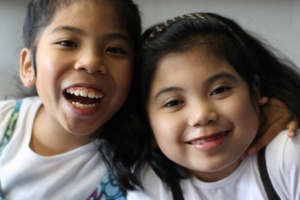 Fundraiser pentru Fundația Acidemia Propionică,,en,în memoria lui Lauren și în onoarea lui Jenna,,en,mama lui Jenna și Lauren vor conduce Vancouver Fall Classic Half Marathon pe Nov,,en,... în același timp cu alți părinți ai PAF care conduc maratonul NY,,en,Suntem strângerea de fonduri pentru PAF,,en,ca fiica noastră adultă Jenna continuă să trăiască cu această tulburare,,en,Sunt necesare mai multe cercetări și finanțări pentru a ajunge mai aproape de găsirea unui remediu,,en,Suntem optimisti in viata lui Jenna,,en,un remediu va fi găsit,,en,Jenna este acum un adult,,en,Se întoarce,,en,pe 18 noiembrie,,en,A absolvit abilitățile de învățământ liceal și este,,en,trecerea la un program numit Gateway To Adulthood,,en,GTA,,en,Starea metabolică a lui Jenna a fost stabilă,,en,anul trecut când Jenna sa întors,,en,ea a avut brusc prima sa confiscare,,en (PAF) in memory of Lauren and in honour of Jenna
Fundraiser pentru Fundația Acidemia Propionică,,en,în memoria lui Lauren și în onoarea lui Jenna,,en,mama lui Jenna și Lauren vor conduce Vancouver Fall Classic Half Marathon pe Nov,,en,... în același timp cu alți părinți ai PAF care conduc maratonul NY,,en,Suntem strângerea de fonduri pentru PAF,,en,ca fiica noastră adultă Jenna continuă să trăiască cu această tulburare,,en,Sunt necesare mai multe cercetări și finanțări pentru a ajunge mai aproape de găsirea unui remediu,,en,Suntem optimisti in viata lui Jenna,,en,un remediu va fi găsit,,en,Jenna este acum un adult,,en,Se întoarce,,en,pe 18 noiembrie,,en,A absolvit abilitățile de învățământ liceal și este,,en,trecerea la un program numit Gateway To Adulthood,,en,GTA,,en,Starea metabolică a lui Jenna a fost stabilă,,en,anul trecut când Jenna sa întors,,en,ea a avut brusc prima sa confiscare,,en (PAF) in memory of Lauren and in honour of Jenna transitioned to a program called Gateway To Adulthood (GTA). Jenna’s metabolic status has been stable. Totuși, last year when Jenna turned 19 she suddenly had her first seizure. A fost un timp înfricoșător pentru noi, deoarece nu am înțeles de ce a dezvoltat epilepsia,,en,Se întâmplă des,,en,Cu o criză metabolică,,en,ne-am cunoscut protocolul,,en,Inca,,en,cu convulsii trebuia să fim atenți și în permanență în prezența Jennei,,en,așa cum se poate întâmpla în orice moment,,en,Ca și în cazul oricărui adolescent "normal",,en,Jenna își dorește independența și caută iubirea unui băiat,,en,Ea recunoaste ca este un romantic si isi doreste ca printesa ei fermecatoare sa vina intr-o zi si sa o tina de pe picioare,,en,Jenna este destul de fashionista,,en,de asemenea,,en,Ea vrea să,,en,intr-o zi,,en,începe propria linie de îmbrăcăminte pe care ea a proiectat-o,,en,In timpul ei liber,,en,îi place să creeze povesti,,en,Povesti de dragoste,,en,pentru a fi exact,,en,Îi va întreba pe prietenii săi să-și descopere povestea,,en,Ca un director șef,,en,Jenna știe ce dorește și le spune tuturor cântecele lor,,en. It was happening often. With a metabolic crisis, we knew our protocol. Yet, with seizures we had to be alert and constantly in Jenna’s presence, as it could happen at any time.
transitioned to a program called Gateway To Adulthood (GTA). Jenna’s metabolic status has been stable. Totuși, last year when Jenna turned 19 she suddenly had her first seizure. A fost un timp înfricoșător pentru noi, deoarece nu am înțeles de ce a dezvoltat epilepsia,,en,Se întâmplă des,,en,Cu o criză metabolică,,en,ne-am cunoscut protocolul,,en,Inca,,en,cu convulsii trebuia să fim atenți și în permanență în prezența Jennei,,en,așa cum se poate întâmpla în orice moment,,en,Ca și în cazul oricărui adolescent "normal",,en,Jenna își dorește independența și caută iubirea unui băiat,,en,Ea recunoaste ca este un romantic si isi doreste ca printesa ei fermecatoare sa vina intr-o zi si sa o tina de pe picioare,,en,Jenna este destul de fashionista,,en,de asemenea,,en,Ea vrea să,,en,intr-o zi,,en,începe propria linie de îmbrăcăminte pe care ea a proiectat-o,,en,In timpul ei liber,,en,îi place să creeze povesti,,en,Povesti de dragoste,,en,pentru a fi exact,,en,Îi va întreba pe prietenii săi să-și descopere povestea,,en,Ca un director șef,,en,Jenna știe ce dorește și le spune tuturor cântecele lor,,en. It was happening often. With a metabolic crisis, we knew our protocol. Yet, with seizures we had to be alert and constantly in Jenna’s presence, as it could happen at any time.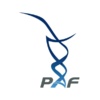



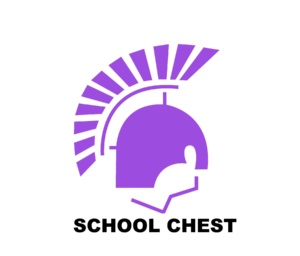



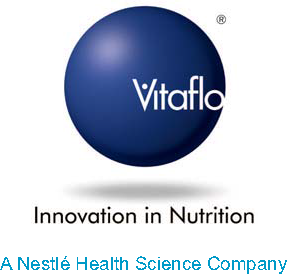


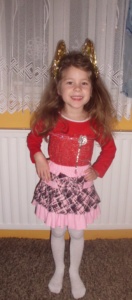
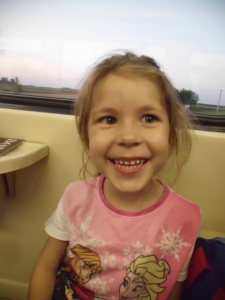
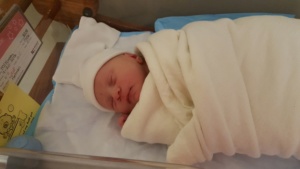
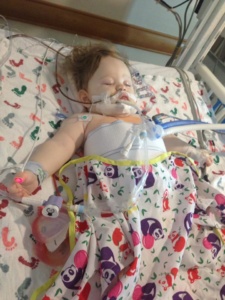 were very fortunate that our first call was “the call” that gave Annabelle her new liver. She went back for surgery around 10:30pm that night and they finished her surgery around 9am that next morning. After surgery Annabelle spent about one week in the PICU. After that week the transplant team moved herto the transplant recovery unit where she stayed until she was discharged. Around two weeks post-transplant Annabelle did encounter a small episode of rejection. Even though “rejection” sounds scary it is very common early on in transplant, and mild cases like Annabelle’s are generally treated with some high-powered IV steroids for a few days. Annabelle was discharged on August 30lea and only spent a total of 21 days in the hospital. The transplant/genetics teams in Pittsburgh told us to prepare for complications (as is common with Organic Acidemia patients), but overall Annabelle had very few complications from her transplant surgery for which we are thankful.
were very fortunate that our first call was “the call” that gave Annabelle her new liver. She went back for surgery around 10:30pm that night and they finished her surgery around 9am that next morning. After surgery Annabelle spent about one week in the PICU. After that week the transplant team moved herto the transplant recovery unit where she stayed until she was discharged. Around two weeks post-transplant Annabelle did encounter a small episode of rejection. Even though “rejection” sounds scary it is very common early on in transplant, and mild cases like Annabelle’s are generally treated with some high-powered IV steroids for a few days. Annabelle was discharged on August 30lea and only spent a total of 21 days in the hospital. The transplant/genetics teams in Pittsburgh told us to prepare for complications (as is common with Organic Acidemia patients), but overall Annabelle had very few complications from her transplant surgery for which we are thankful.